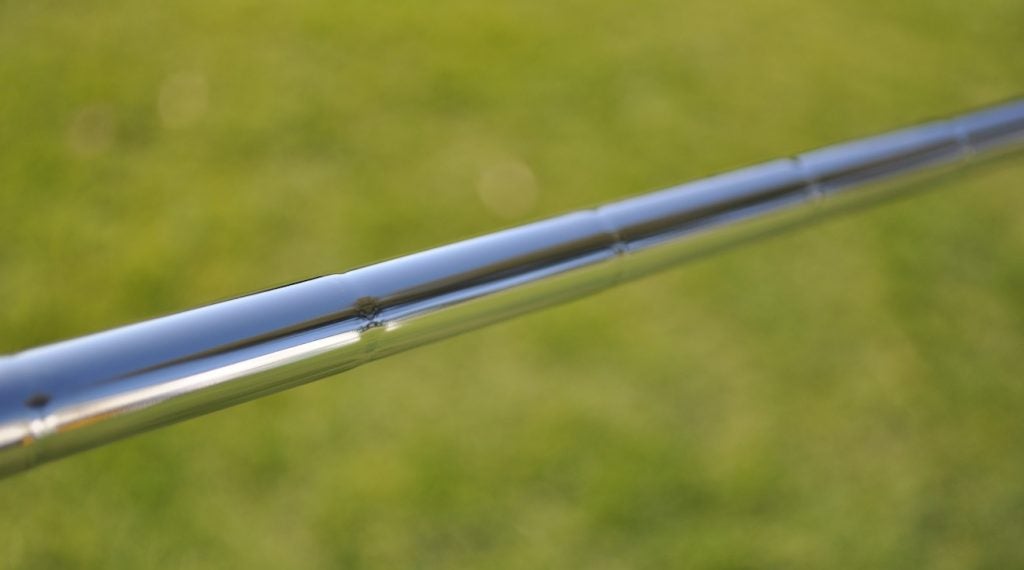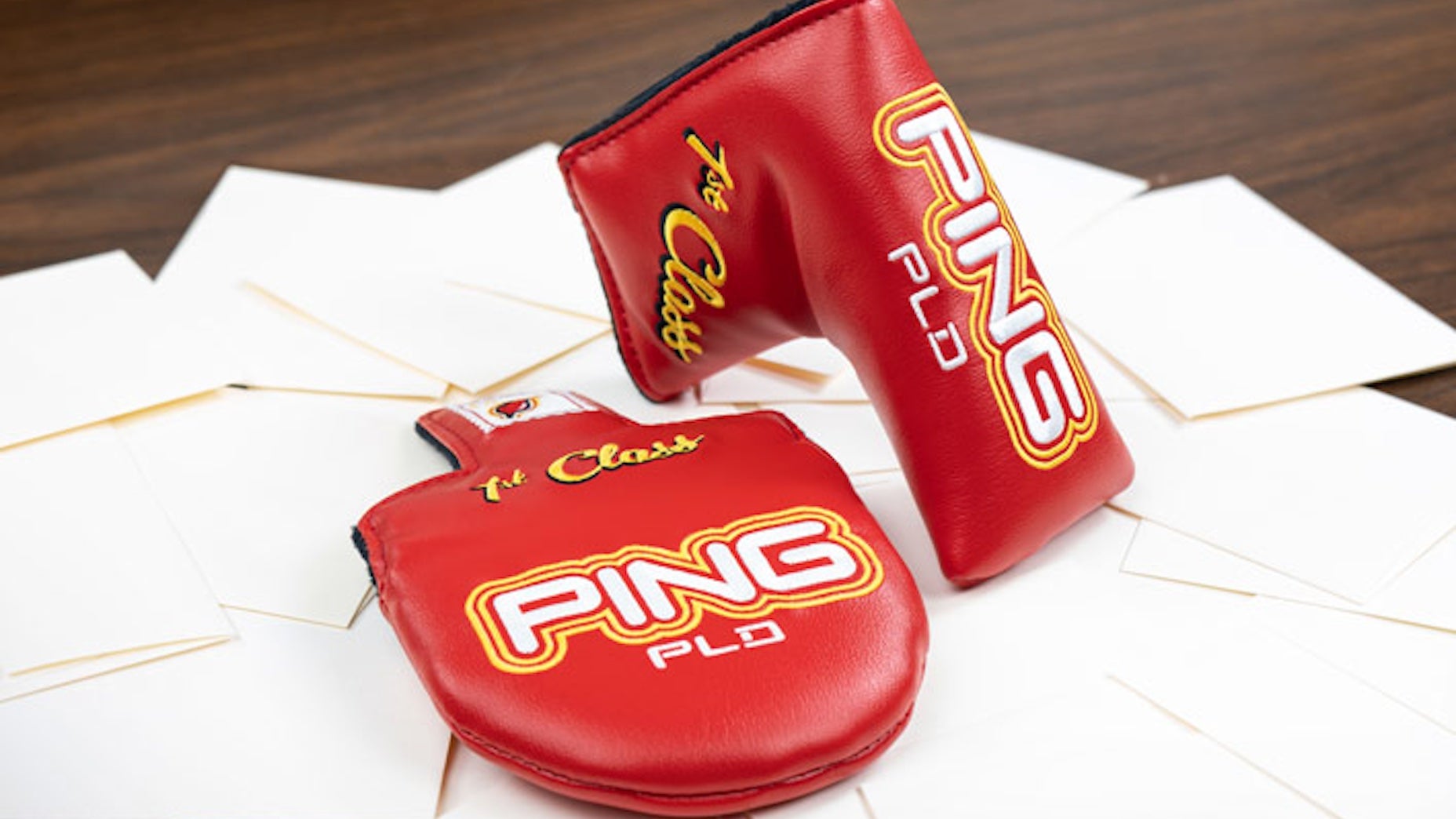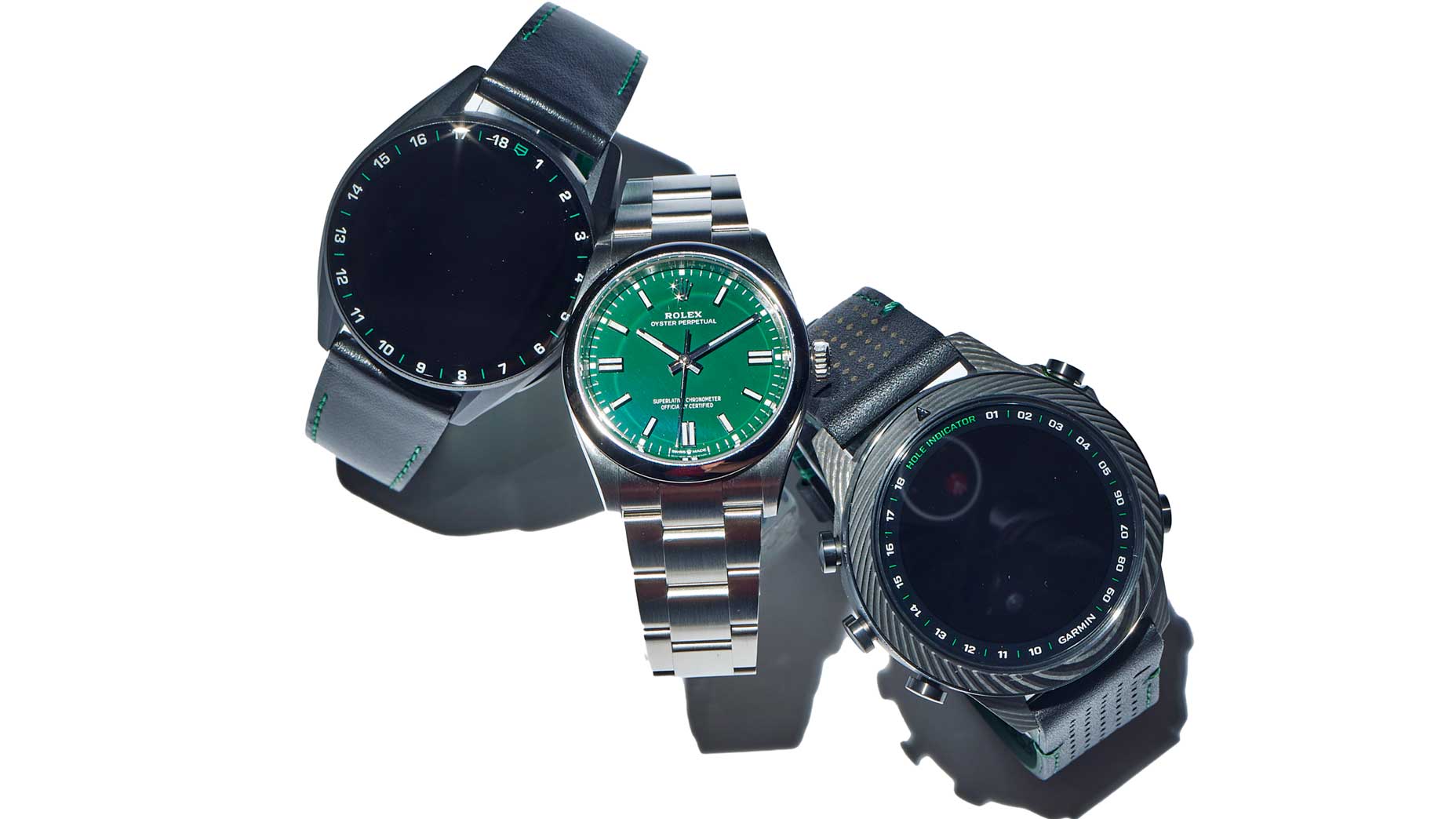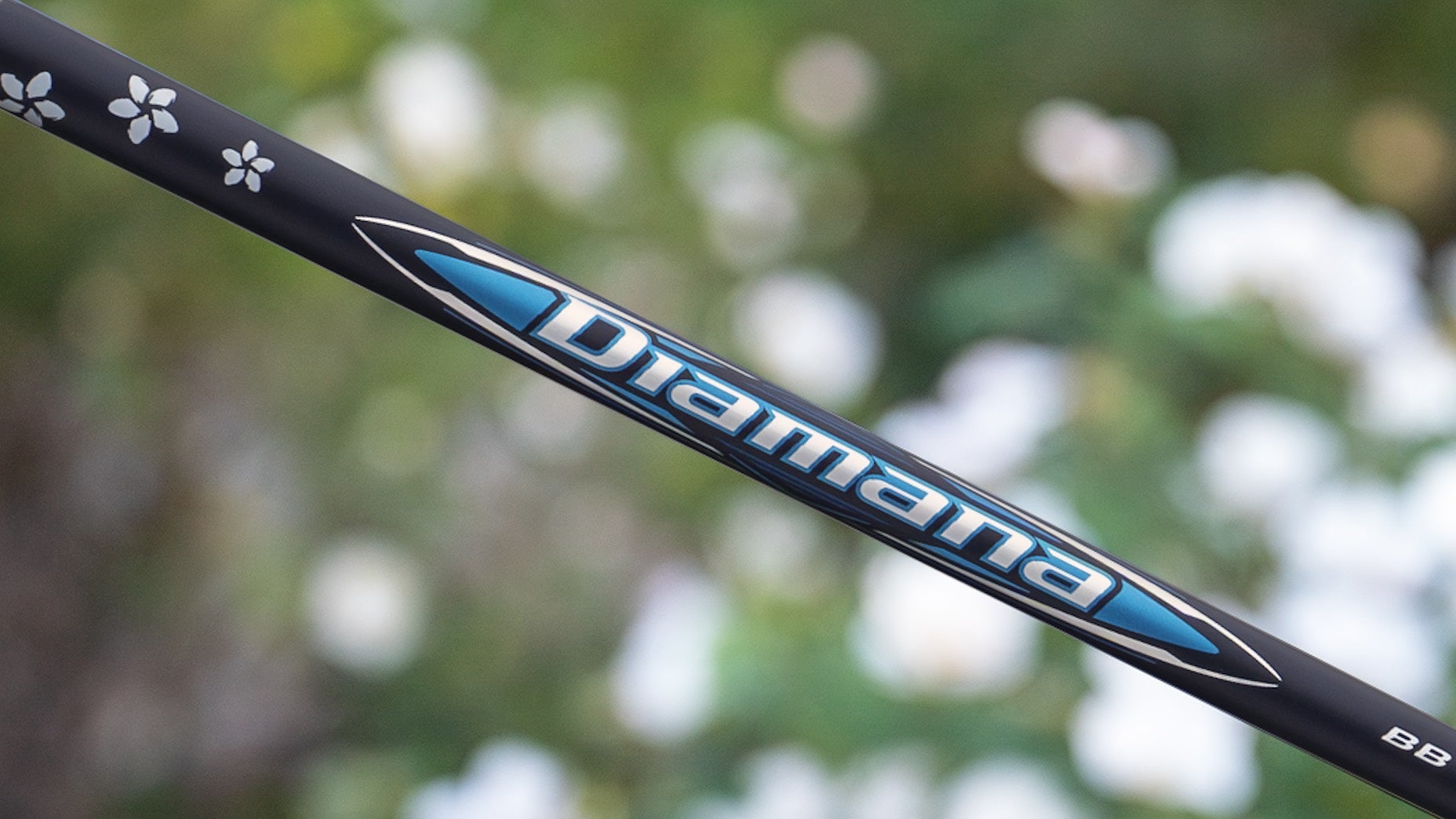 How TaylorMade and Pac-Man linked up for the ultimate collection
How TaylorMade and Pac-Man linked up for the ultimate collection
Gear 101: What’s the difference between stepped and stepless steel shafts?

Welcome to Gear 101, GOLF.com’s weekly dive into an equipment topic that will make you smarter and more knowledgeable when it comes to the tools in your bag.
Not all steel shafts are created equal. Flex and EI profile play an important role in determining the ideal shaft for a golfer, but so, too, does something that gets far less fanfare: the step pattern.
If you have a set of steel-shafted irons, go ahead and take a look at how the shaft is constructed. There’s a good chance it features a uniform smoothness or has some subtle ridges in the lower section of the shaft.
Those ridges are called “steps,” and they play an important role in how the shaft performs during the swing. Let’s use Rory McIlroy and Dustin Johnson as examples. McIlroy plays a stepless Project X 7.0 product while Johnson prefers the step pattern found on True Temper’s Dynamic Gold Tour Issue X100.
Both shafts are considered extra-stiff products, but according to Paul Loegering, True Temper’s director of Tour operations, there are some differences based on the steps (or lack thereof).

“With step shafts, you’re able to isolate durability, flex and kick point much easier,” Loegering said. “So you can create a very stiff tip with a soft handle — or do the opposite. A guy like Dustin Johnson, who forward presses it a lot, loves Dynamic Gold because he likes to feel load and release. So with steps, you’re going to be able to get more feel with that load and release.”
As far as how the steps are added to the shaft, it’s done through a machining process called “swaging,” whereby the diameter of the steel is altered slightly in an efficient manner with minimal material waste. Depending on the pattern and length between the steps — as well as the length of the tip and butt sections — launch, spin and workability can be affected. For someone who’s looking for more across the board in those three areas, they’ll usually find it in a stepped product.
But what about if you’re trying to tighten dispersion and lower launch and spin? Loegering noted a stepless product like McIlroy’s Project X could a better option.
ADVERTISEMENT
“Stepless is a one-piece shaft,” he said. “The taper rate and wall thickness determine flex characteristics. So you look at a guy like McIlroy; he loves Project X because he doesn’t want to feel anything dynamically in the shaft. He wants it to be a one-piece feeling without the load and release.
Without the presence of a step pattern, the ball won’t move as much from side to side, making Project X a good option for those guys who don’t want to see movement. For a high spin guy, I’d tend to fit you in Project X to keep the spin and launch down.”
Finding a shaft flex built for your swing speed is important, but the next time you get fit for a set of irons, take the step pattern into consideration. It’s another aspect that can affect what you’re trying to accomplish on the course.
To hear more gear insights from Jonathan Wall and True Spec’s Tim Briand, subscribe and listen each week to GOLF’s Fully Equipped podcast: iTunes | SoundCloud | Spotify | Stitcher
ADVERTISEMENT







